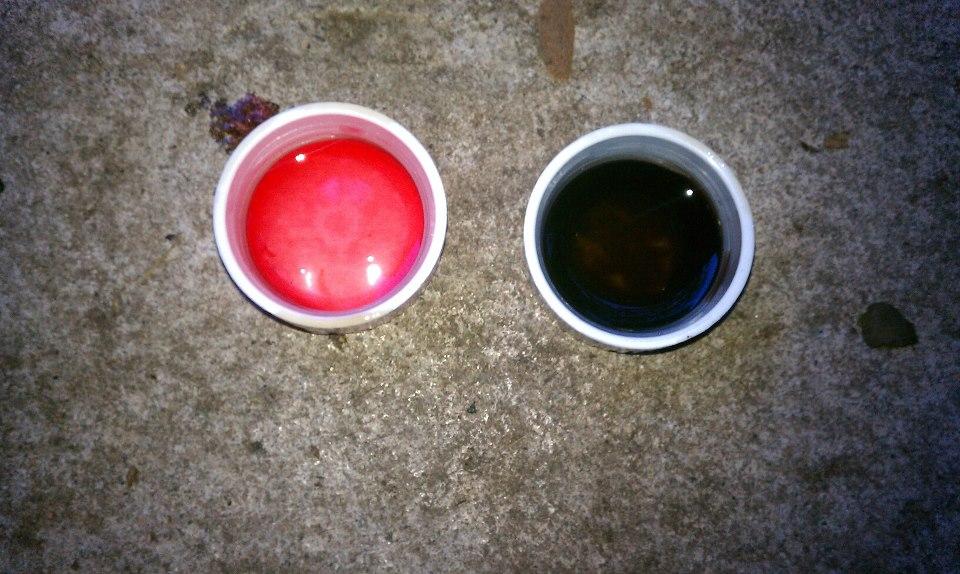A car’s transmission system functions properly when the working parts inside the transmission are well-lubricated and not damaged by the intense heat generation that takes place as they work. The fluid in the transmission plays a critical role in ensuring that the vehicle gears properly shift. Black transmission fluid is a red flag that indicates several problems in the system.
Contents
What Does The Transmission Fluid Do?
Transmission fluid is an important catalyst that helps the engine parts inside the gearbox to be cooled and operate smoothly and stably. The task of car transmission fluid on manual transmission vehicles: For manual transmission vehicles, the transmission fluid is a lubricant, cooling, and cleaning internal friction-bearing parts.
In an automatic car, the automatic transmission fluid (ATF) acts as both a gear lubricant and a hydraulic fluid. In reducing friction between the various components inside the system, the fluid endures extreme heat cycles, which can change its color. With increasing mileage and age of the car, it can turn black due to burning or collection of debris.

New car transmission oil is usually red, sometimes pink or light brown. However, the color of the transmission fluid changes over time due to the harsh operation that occurs when we operate the car. When you check that the fluid comes into black, you must immediately change the oil with a new one to avoid damage to the transmission system.
Black transmission fluid means that its lubricating effect has been completely disabled due to oxidation. It can lead to problems in acceleration, gear shifting, and, in the worst case, transmission failure. Regular inspection and timely cleaning can prevent such consequences.
Black Transmission Fluid: The Measures You Can Take
When the fluid looks like tar or exudes a distinct burning smell, there are a few things that you can do:
Clean the entire system
The general recommendation is to drop the pan and drain the entire transmission properly. You should replace the filter and refill the new one with the correct fluid recommended in the Owner’s Manual. Using the wrong type, which is incompatible with the vehicle, can spell disaster for the overall transmission system.
Read more:
- Pay Attention to These Low Transmission Fluid Symptoms
- The Differences between Transmission Fluid and Gear Oil
Don’t do flushing
Don’t flush the black transmission fluid. Too much damage can be done in this method by pushing dirt and other big particles or debris into the small spaces and crevices in the transmission system. There is also the risk of blasting away tiny but important objects of delicate transmission parts.
Never refill a dirty transmission system
Thinking of putting fluid in a dirty automated transmission (150,000+ miles) with black fluid? Not a good idea! Several transmission parts may have already been destroyed when the fluid smells burnt, seems too thick, or has a visible layer of deposits. Replacing only the fluid can cause the transmission to go out entirely.

New fluid can further degrade the system by transferring sludge into small crevices. The best thing to do in these cases would be to change the entire transmission system. It costs a ton of money, but at least the risk of a transmission failure in the middle of a highway won’t be there.
Colors Of Transmission Fluid: What Does They Mean?
A fact that you may not know is that over time, the color of the transmission fluid will change. The reason may be because the vehicle’s operation takes place in harsh weather conditions, or due to friction between parts in the transmission system. There are several cases where a change in transmission oil color can indicate that our vehicle is having problems:
Light brown
Over time, the transmission fluid will change from clear red to light brown. In this case, you can still rest assured and do not need to change the fluid because the transmission fluid still has a good lubricating effect.
Dark brown
Starting from this stage, the transmission fluid is contaminated. At this point, the fluid no longer effectively lubricates the transmission system. If you still try to use this oil, it will easily cause damage.
Black fluid
Black transmission oil means that its lubricating effect has been completely neutralized due to oxidation. In this case, you must immediately change the new fluid to avoid damage to the transmission system.
Light pink
It sounds unbelievable, but if the oil turns light pink, there is a high possibility that the transmission system has water mixed in, easily causing gear damage.
Watch more:
The Final Words
In a nutshell, if you see black transmission fluid, replace it with the right one, avoid flushing, and change all the transmission parts if there is a burnt smell. Use a dipstick to check the condition of the fluid at regular intervals.
Maintenance is the key. Apart from checking on the transmission system on a regular basis, you should change the fluid every 50,000 – 60,000 miles, or at a shorter mileage if the Owner’s Manual instructs so.




I want to know trasmision of toyota mark x wirch beter??
hi friend I have a toyota mark x but i dont well trasmision oil for this car pleas help me